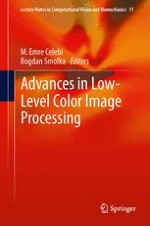2014 | OriginalPaper | Buchkapitel
Color Saliency Evaluation for Video Game Design
verfasst von : Richard M. Jiang, Ahmed Bouridane, Abbes Amira
Erschienen in: Advances in Low-Level Color Image Processing
Verlag: Springer Netherlands
Aktivieren Sie unsere intelligente Suche, um passende Fachinhalte oder Patente zu finden.
Wählen Sie Textabschnitte aus um mit Künstlicher Intelligenz passenden Patente zu finden. powered by
Markieren Sie Textabschnitte, um KI-gestützt weitere passende Inhalte zu finden. powered by
